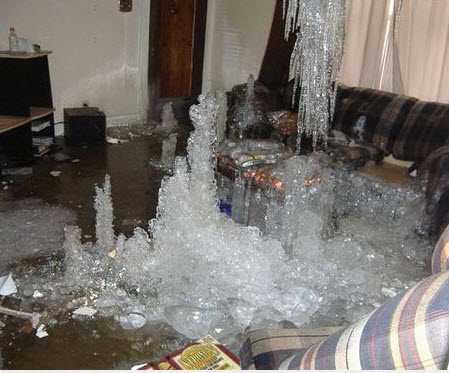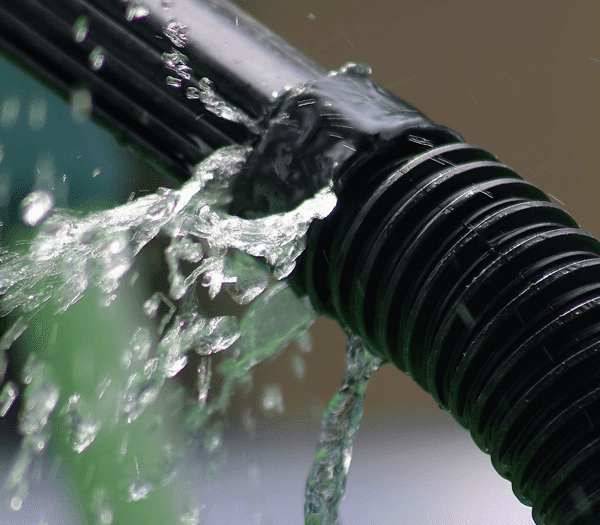Just how do you actually feel with regards to How to Install and Connect a New Dishwasher?

A ruptured pipe is a major emergency; you can only stand as you watch water you pay dearly to rejoin with the planet. In even worse situations, you observe a pool on your kitchen floor, which is a fantastic trip threat, specifically if you have youngsters around. If the pipeline that burst remained in your walls, problem: you might need to paint that whole area.
Exactly how can a catastrophe like a ruptured pipeline be stopped as well as handled? Well, by paying attention to your professional emergency plumbing technicians as well as complying with these guidelines.
How do I know when my pipes have ruptured?
Rising and fall water stress
Pipes do not just burst in a day. You might have noticed that your kitchen faucet or shower doesn't run right away when you turn the tap. It might stop for a couple of secs and afterwards blast you with more force than typical.
In other circumstances, the water might appear typical initially, then drop in stress after a couple of secs.
Polluted water
Lots of people think a ruptured pipeline is a one-way electrical outlet. Fairly the contrary. As water drains of the hole or gouge in your plumbing system, impurities locate their method.
Your water may be contaminated from the resource, so if you can, examine if your water storage tank has any problems. Nonetheless, if your drinking water is supplied and also cleansed by the city government, you should call your plumber quickly if you see or scent anything funny in your water.
Puddles under pipes and also sinks
When a pipeline bursts, the outflow forms a pool. It may show up that the pool is growing in size, and also regardless of how many times you wipe the puddle, in a couple of minutes, there's another one waiting to be cleansed. Commonly, you may not have the ability to map the puddle to any kind of visible pipelines. This is an indication to call an expert plumber.
Wet wall surfaces and water spots
Prior to a pipe ruptureds, it will certainly leak, the majority of times. If this persistent dripping goes unnoticed, the leakage might graduate right into a wide tear in your pipe. One simple means to avoid this emergency is to keep an eye out for wet wall surfaces advertisement water discolorations. These water spots will certainly lead you right to the leakage.
Untraceable trickling sounds
Pipe bursts can take place in one of the most unpleasant locations, like within concrete, inside wall surfaces, or under sinks. When your house goes quiet, you may be able to hear an annoyingly persistent dripping noise. Even after you've checked your shower head and cooking area tap, the dripping may continue.
Beloved viewers, the trickling might be originating from a pipe inside your wall surfaces. There isn't much you can do concerning that, other than tell an expert plumber.
Show up the Warm
Set up followers to blow warm into cool spaces. Keep the garage door shut. If you have actually reduced water circulation, warm the most at risk pipelines (generally in basements and also crawl spaces or near exterior wall surfaces) with a hair dryer. Leave the faucet on while you use heat. As you thaw ice, the flow will raise. To avoid pipelines from cold, insulate your wall surfaces.
Start Doing Away With the Water
Order the mop, pails and a shop vacuum cleaner to start to do away with the water because you definitely don't desire it soaking into every little thing else in the house. And also, a quick tidy up will decrease the opportunities of something getting moldy.
What do I do when I identify a ruptured pipeline?
Your water meter will continue to run even while your water wastes. To reduce your losses, locate the major controls and also turn the supply off. The water mains are an above-ground framework at the edge of your residential property.
How to Fix & Detect a Leaking Pipe
How Do I Know if a Pipe is Leaking?
Leak detection tests can help you determine if your pipe has a leak. Even if you don’t see an apparent leak, you should still conduct leak detection tests regularly to save water and money—and prevent major damage to your home.
Water meter. It can be helpful to figure out what your usual water meter usage numbers are and then monitor them regularly. To monitor your meter, first, turn off all water faucets in your home. Check the meter and write down the numbers. In a few hours, check the meter again. If the numbers have changed, you have a leak. Water gauge. Use a water gauge to test your water pressure. Your showerhead should produce a certain amount of water pressure based on its model and design. If the pressure is lower than it is supposed to be for that specific showerhead, your home likely has a leak. Puddles. Look inside your bathroom, laundry, and kitchen sink cabinets. Puddles around the cabinets or around toilets, tubs, showers, and washing machines indicate the presence of a leaking pipe. You may also notice loose tiles, peeling or flaking paint, or mold caused by water accumulation. Napkin test. Even if you don’t see any puddles, you may still have a leak. You can test for water leaks in the bathroom, laundry, and kitchen by wiping below-sink connections with a napkin, paper towel, or piece of toilet paper. If it becomes damp, you probably have a leaking pipe under the sink. Discolored walls. Walls that are discolored—usually with brown or yellow stains—or bulging might mean that they have been impacted by water damage caused by a leaking pipe. Smell. A leaky pipe will create sitting water, and over time, that water may develop a musty smell. If your home smells musty, but you can’t locate the source, it may be due to a leak. Steps for Fixing a Leaking Pipe
A leaky drain can be remedied by tightening the pipe base, replacing the drain seal, caulking the rim, and tightening the pipe nut. Similarly, a leaking toilet pipe can be treated by tightening the packing nut. You may also need to replace the valve. A leaky faucet may just need tightening or replacement of the washers. If that doesn’t work, consider replacing your faucet. If your pipe has a hole in it, you may want to use a pipe leak sealer or pipe leak tape. This quick fix for water pipe leaks can also temporarily fix a copper pipe leak. https://www.ahs.com/home-matters/quick-tips/how-to-tell-if-pipes-are-leaking/

Do you enjoy reading up on How to Install and Connect a New Dishwasher? Leave a remark down the page. We will be delighted to see your views about this blog posting. Hoping that you come back again before long. Liked our write-up? Please share it. Let others locate it. Many thanks for your time. Come back soon.
Rates